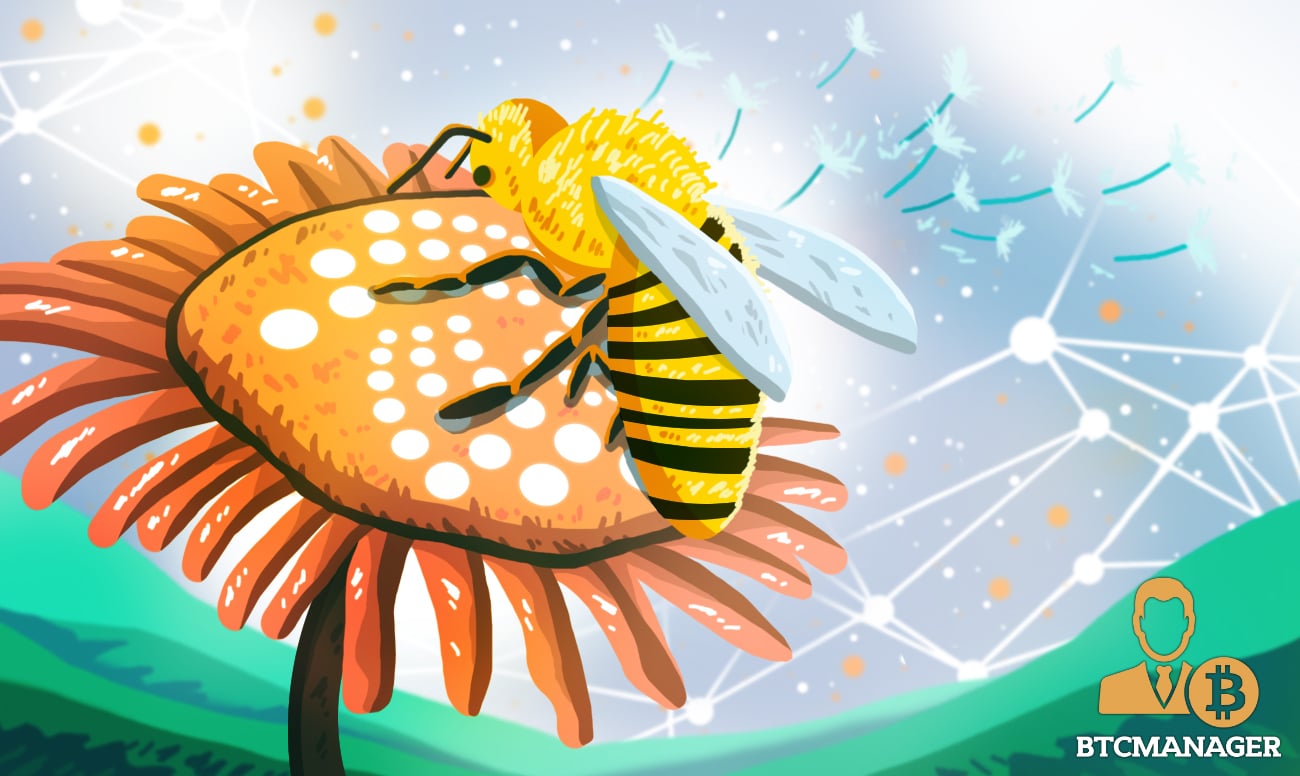IOTA (MIOTA) Launches Pollen Testnet Version 0.3.0

IOTA (MIOTA) a distributed ledger technology (DLT) project focused on facilitating transactions between machines and devices in the Internet of Things (IoT) ecosystem, has announced the release of its Pollen testnet v0.3.0, as part of preparations towards becoming a fully decentralized network, according to a press release on October 12, 2020.
IOTA 2.0 Launch Gets Closer
The IOTA team has reached another significant milestone in their journey towards creating a highly scalable, decentralized and fee-less distributed ledger with the launch of the Pollen Testnet v0.3.0.
For those who are unaware, IOTA has since made it clear that Pollen is the first official testnet of the IOTA 2.0 network. Pollen is designed to lay a solid foundation upon which IOTA will build its coordinator-less network.
In other words, the Pollen network is simply a research testbed for the members of the IOTA development team as well as external researchers to “validate key concepts from the Coordicide whitepapers and simulate certain attack vectors.” After Pollen, comes the Nectar testnet and finally the IOTA Honey testnet which is the final release candidate for IOTA 2.0.
Inside Pollen Testnet v0.3.0
Notably, the team has made it clear that the latest Pollen testnet v0.3.0 comes with a vast array of features and changes including the full integration of the Decentralized Random Number Generator (dRNG) module, and several security bug fixes.
The primary objective of a dRNG is to increase randomness in a distributed ledger, thereby making the network more secure. In the previous iteration of the Pollen tesnet, randomness was generated locally by each IOTA node via a Unix timestamp. However, the team says despite the simplicity of this method, it’s predictability makes it very insecure.
In the Pollen testnet v0.3.0, IOTA uses the drand protocol developed by the DEDIS research group to implement dRNG.
Explaining how the drand system of dRNG implementation works, IOTA wrote:
“drand works in two phases: setup and generation. In the setup phase, a set of nodes called a committee, run a distributed key generation (DKG) protocol to create a collective private and public key pair shared among the members of the committee. Each member gets a copy of the public key as well as a share of the collective private key, such that no individual member knows the entire collective private key. The generation phase works in discrete rounds. In every round, the committee produces a new random value by leveraging on a deterministic threshold signature scheme such as BLS.”
Other key changes that come with Pollen v0.3.0 include an upgrade to the latest hive.go, upgraded NodeJS dependencies of the dashboard, and more.
IOTA (IMOTA) has seen significant adoption since its launch in July 2016, even though it has also had its fair share of turbulence.
On October 1, 2020, BTCManager reported that IOTA has joined forces with some highly reputed firms including Jaguar Land Rover to launch a blockchain framework for secure smart device access control dubbed IOTA Access.
At press time, the price of IOTA (MIOTA) sits at $0.287237, with a market cap of $798.38 million, as seen on CoinMarketCap.













